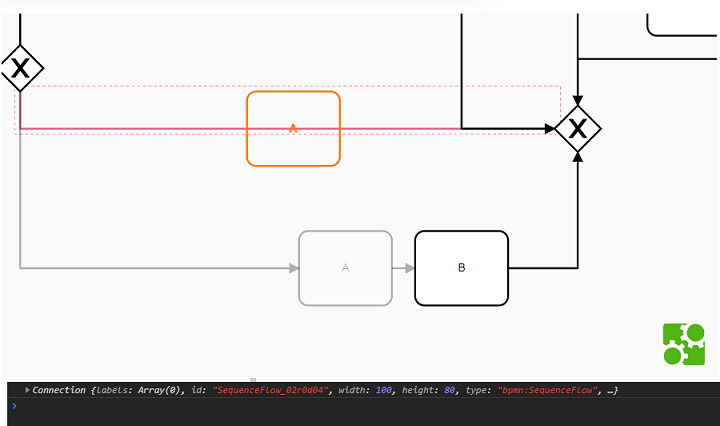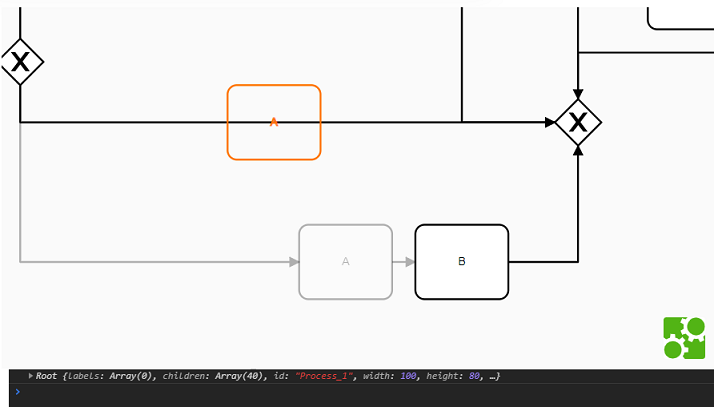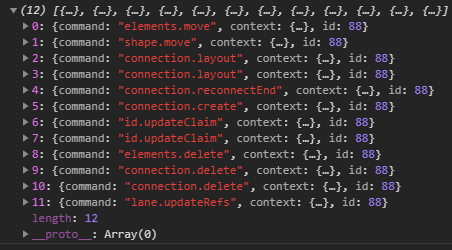Hello everyone, 
My goal here would be to add a custom rule to the modeler that prevents “inserting” shapes into a flow.
To be more clear, I am referring to the user action of moving a shape and inserting it onto an existing Sequence Flow. This usually results in the shape being inserted to the path, and automatically connecting it to the previous and next shapes. I want to override this, without removing the possibility of simply moving shapes in the process
I assume creating a custom rule is the correct way to do this. What I (think I) need is the name of the event related to the insert action, something like ‘shape.insert’, or ‘elements.move.insert’, so that I can add a rule over it.
I looked in spec, test, and in the custom rules example but could not find it.
Aside from this problem, is there a place where I can see a full list of those magic words and what the are for ? Generally, I don’t know where to look when I search through the test documentation and the source code itself. Maybe I’m not looking in the right places ?
Thank you for your time. 





 The dev team will confirm whether it is or not, but at least it worked for me so I’m posting it if it can help anyone. Also to tell
The dev team will confirm whether it is or not, but at least it worked for me so I’m posting it if it can help anyone. Also to tell 